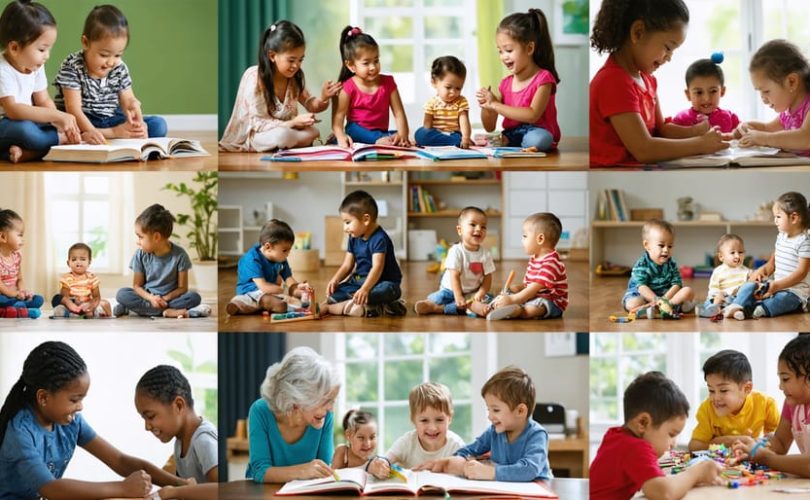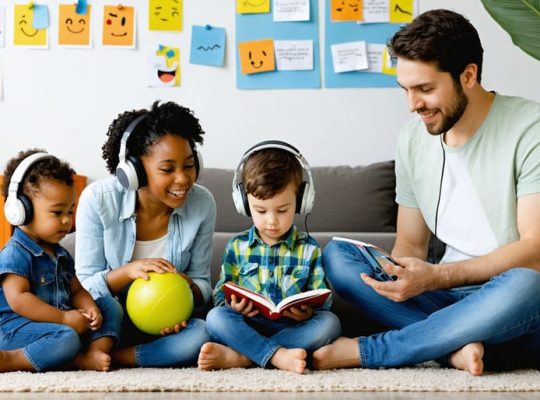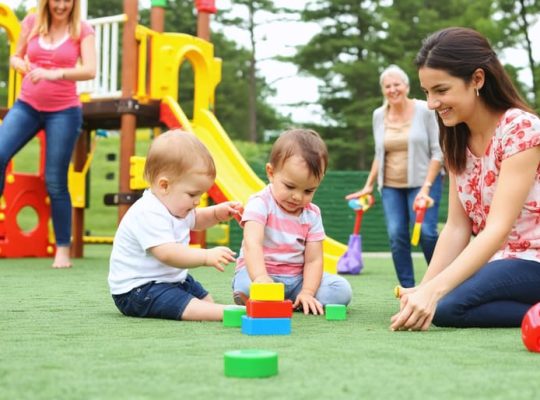Cultural traits shape every aspect of a child’s emotional development and social identity, profoundly influencing how they perceive, interact with, and understand the world around them. From the moment a child is born, they inherit a rich tapestry of beliefs, values, and behavioral patterns that will guide their development throughout life.
Understanding these eight fundamental cultural traits isn’t just academic curiosity—it’s essential knowledge for anyone involved in raising or educating children in our increasingly interconnected world. Whether you’re a parent navigating multiple cultural influences at home, an educator working with diverse student populations, or a healthcare professional serving families from various backgrounds, recognizing these cultural dimensions helps create more nurturing and inclusive environments for children.
These traits manifest differently across societies, from how emotions are expressed and regulated to the ways achievement is defined and celebrated. By exploring them, we gain valuable insights into how culture molds young minds and shapes their future relationships, aspirations, and sense of self.
Let’s examine these eight cultural characteristics that profoundly impact child development, considering how they vary across different communities and influence everything from family dynamics to educational approaches.
Language and Communication Patterns
Direct vs. Indirect Communication
Different cultures approach communication in distinct ways, profoundly affecting how children learn to express themselves and interact with others. In some cultures, direct communication is valued, encouraging children to speak their minds openly and directly state their needs. These children often build strong social skills through straightforward expressions of thoughts and feelings.
In contrast, other cultures emphasize indirect communication, where meaning is conveyed through context, non-verbal cues, and subtle hints. Children from these backgrounds learn to read between the lines and consider the broader social context before speaking. They develop heightened awareness of body language and social harmony.
Understanding these differences is crucial for parents and educators. A child who seems shy or reluctant to speak up may simply be following their cultural communication norms. By recognizing and respecting these varying approaches, we can better support children’s social development while honoring their cultural heritage.

Family Structure and Relationships
Collective vs. Individual Focus
The way a culture values individual achievement versus collective harmony significantly impacts how children develop their sense of self and relationship with others. In family-centric societies, like many Asian and African cultures, children learn early on to prioritize group needs over personal desires, fostering strong family bonds and community responsibility. Parents in these cultures often emphasize sharing, cooperation, and considering how one’s actions affect the whole family.
In contrast, individualistic societies, commonly found in Western cultures, tend to promote personal achievement, self-expression, and independence. Children are encouraged to develop their unique identities, make independent choices, and pursue individual goals. Dr. Sarah Chen, a child development specialist, notes, “Neither approach is inherently better – each offers distinct advantages for child development. The key is understanding how these cultural values shape our parenting choices and children’s social-emotional growth.”
Understanding these differences helps parents and educators create supportive environments that respect both cultural heritage and individual needs while fostering healthy development.
Educational Values and Learning Styles

Academic vs. Practical Skills
Different cultures place varying emphasis on what children should learn and how they measure success. In some societies, formal academic achievement and test scores are considered paramount, with families dedicating significant resources to tutoring and extra classes. This is particularly evident in many East Asian cultures, where academic excellence is often viewed as the primary path to success.
Other cultures prioritize practical skills and hands-on learning, believing that real-world experience and traditional knowledge are equally valuable. For instance, many indigenous communities emphasize learning through observation and participation in daily activities, teaching children essential life skills, crafts, and cultural practices.
Both approaches have their merits and challenges. While strong academic focus can lead to high educational achievement, it may also create stress and limit creative expression. Conversely, emphasis on practical skills can build confidence and self-reliance but might limit opportunities in formal educational settings. Understanding these different perspectives helps educators and parents create balanced learning environments that respect cultural values while supporting children’s overall development.
Social Norms and Expectations
Every culture has distinct social expectations that shape how children learn to interact with others and understand their role in society. These unwritten rules vary significantly across different communities and can profoundly impact a child’s development.
In some cultures, children are expected to speak only when spoken to and show deference to adults, while others encourage children to actively participate in conversations and express their opinions freely. For example, many East Asian cultures emphasize group harmony and collective achievement, leading children to develop strong cooperative skills. In contrast, Western societies often prioritize individual achievement and self-expression.
Gender roles also play a crucial part in these cultural expectations. While some societies maintain traditional gender-specific behaviors and responsibilities, others are moving toward more fluid and equal expectations for all children. A child psychologist I work with often shares how understanding these differences helps create more inclusive learning environments.
The way children are expected to show respect, express emotions, or handle conflict can differ dramatically between cultures. Some communities value direct communication, while others prefer indirect approaches to maintaining harmony. Understanding these variations helps parents and educators support children’s social development while honoring their cultural heritage and fostering positive cross-cultural interactions.
Religious and Spiritual Beliefs
Religious and spiritual beliefs play a profound role in shaping children’s understanding of the world and their place in it. These beliefs often serve as a framework for moral development, social connections, and emotional resilience. Many families incorporate daily spiritual practices, from prayer and meditation to attending religious services, which help children develop a sense of routine, community belonging, and existential security.
Research shows that children raised in spiritually active households often demonstrate stronger coping mechanisms when facing challenges. For example, many children find comfort in prayer during stressful situations or draw strength from their faith community during difficult times. These spiritual foundations can provide children with a sense of purpose and help them develop empathy and compassion for others.
However, it’s important to recognize that spiritual development varies significantly across cultures. While some families emphasize formal religious education and strict adherence to traditions, others may take a more flexible approach, incorporating various spiritual elements into their daily lives. Some parents choose to expose their children to multiple faith traditions, fostering religious literacy and cultural understanding.
The key is to support children’s spiritual curiosity while maintaining respect for different beliefs and practices. This approach helps children develop both a strong sense of identity and an appreciation for religious diversity.
Gender Roles and Identity
Gender roles and expectations vary significantly across cultures, profoundly influencing how children develop their sense of identity and understand their place in society. Some cultures maintain strict distinctions between male and female roles, while others embrace more fluid and flexible gender expressions.
For example, in many traditional societies, girls might be encouraged to focus on caregiving and domestic skills, while boys are steered toward leadership and physical activities. However, modern urban cultures often promote more balanced gender expectations, encouraging children of all genders to explore diverse interests and capabilities.
Dr. Sarah Chen, a cultural psychologist, notes: “Children absorb gender-related messages from their earliest years through family interactions, media, and social institutions. These cultural messages shape not only their behavior but also their self-concept and future aspirations.”
Parents and educators should be mindful of how cultural gender expectations might limit or enhance a child’s development. Creating an environment that respects cultural traditions while allowing children to express themselves authentically can help build confident, well-adjusted individuals. This might mean supporting a boy’s interest in cooking or a girl’s passion for engineering, while still acknowledging and respecting their cultural heritage.
The key is finding a balance that honors both cultural values and individual identity development.

Emotional Expression and Regulation
Every culture has unique ways of expressing and regulating emotions, which significantly impacts how children learn to manage their emotions. For instance, in many Asian cultures, children are taught to maintain emotional restraint and prioritize group harmony, while Western cultures often encourage more open emotional expression.
Dr. Sarah Chen, a child psychologist specializing in cross-cultural development, shares, “I’ve observed how Japanese children learn early on to consider others’ feelings before expressing their own, while American children are typically encouraged to voice their emotions freely.”
These cultural differences shape everything from how children display joy and excitement to how they handle frustration and disappointment. Some societies emphasize verbal expression of feelings, while others value non-verbal cues and subtle emotional communications.
Parents and educators should recognize that there’s no universal “right way” to handle emotions. What matters most is helping children develop healthy emotional awareness while respecting their cultural background. This balanced approach ensures children can navigate both their heritage and the broader global community with emotional intelligence and cultural sensitivity.
Understanding cultural traits and their impact on child development is crucial for creating supportive, inclusive environments where all children can thrive. As we’ve explored these eight fundamental cultural traits, it’s clear that each plays a vital role in shaping how children learn, interact, and grow.
For parents, recognizing these cultural influences helps create more intentional parenting approaches that honor both heritage and individual needs. Consider incorporating elements from your own cultural background while remaining open to adapting practices that best serve your child’s development.
Professionals working with children should maintain cultural sensitivity while avoiding stereotypes or assumptions. Remember that cultural traits exist on a spectrum, and individual families may express these traits differently. Building trust with families starts with respecting their cultural values while offering guidance that bridges traditional practices with contemporary child development knowledge.
Moving forward, we encourage both parents and professionals to:
– Observe and appreciate cultural differences without judgment
– Create inclusive environments that celebrate diversity
– Maintain open dialogue about cultural practices
– Adapt approaches based on each family’s unique cultural context
– Seek additional cultural competency training when needed
By understanding these cultural traits, we can better support children’s healthy development while honoring their cultural heritage. This knowledge empowers us to create nurturing environments where every child feels valued, understood, and supported in their journey toward becoming confident, well-adjusted individuals.




